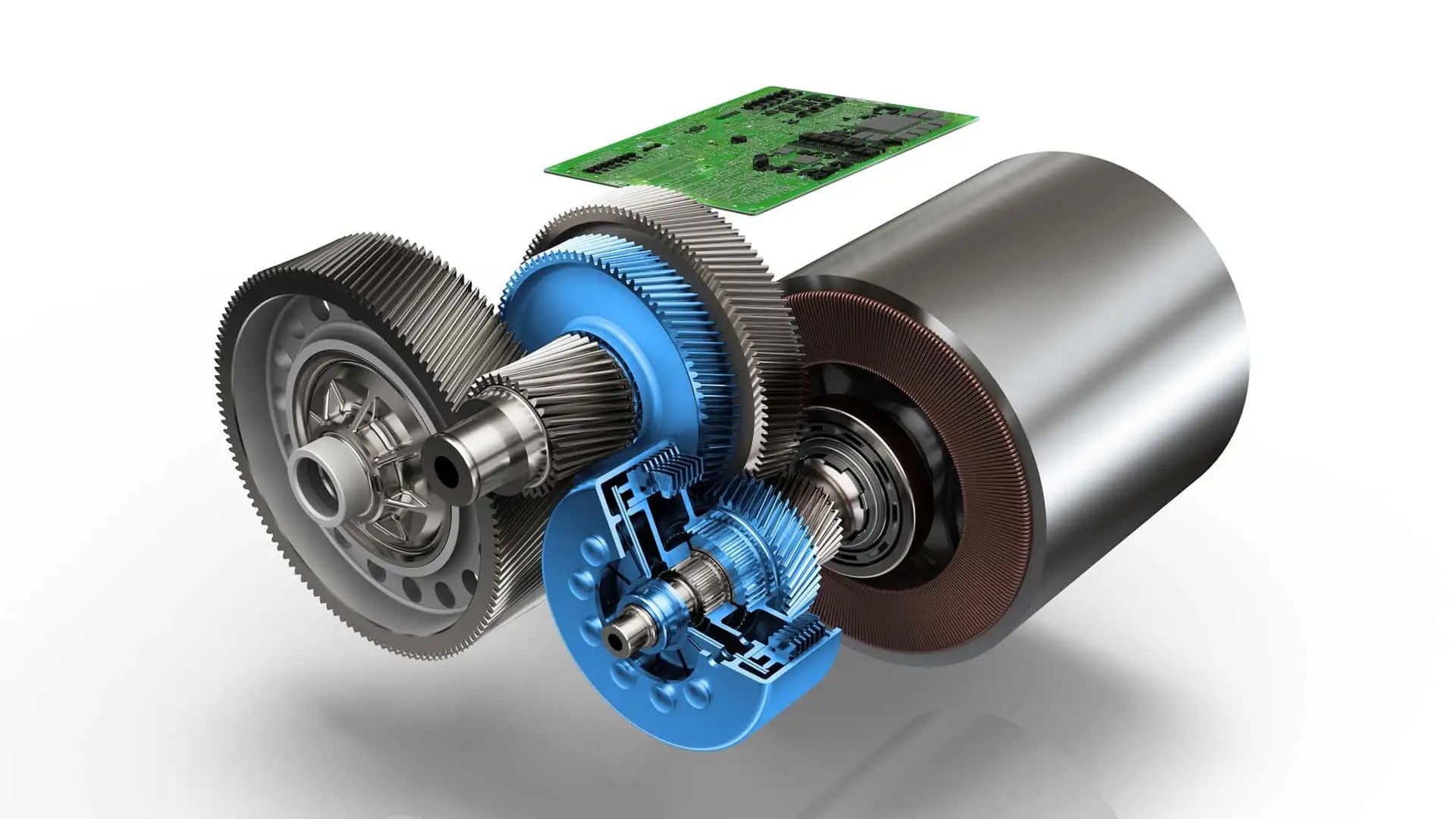Since EVs can do just fine with a single-speed transmission, the gearbox itself is much simpler and more compact (and often integrated into a one drive unit along with the electric motor). Electric traction motors can spin at over 10,000 rpm and they feature a reduction mechanism to gear them down.
As a simple visualization, the motor’s output shaft is connected to a small cog, which spins a larger cog. This brings rpm down, increases torque, and makes the power usable in an automotive application. Electric motors also produce peak torque from almost zero rpm and maintain it until very high in the rev range, and this is another factor that allows EVs to work just fine with only one gear that takes them from a standstill up to top speed.













